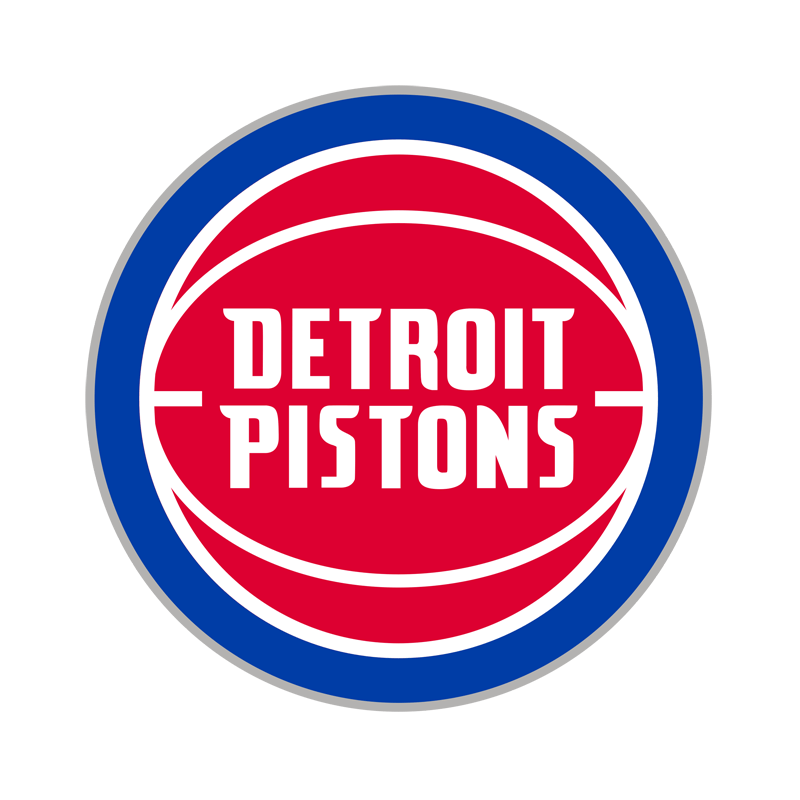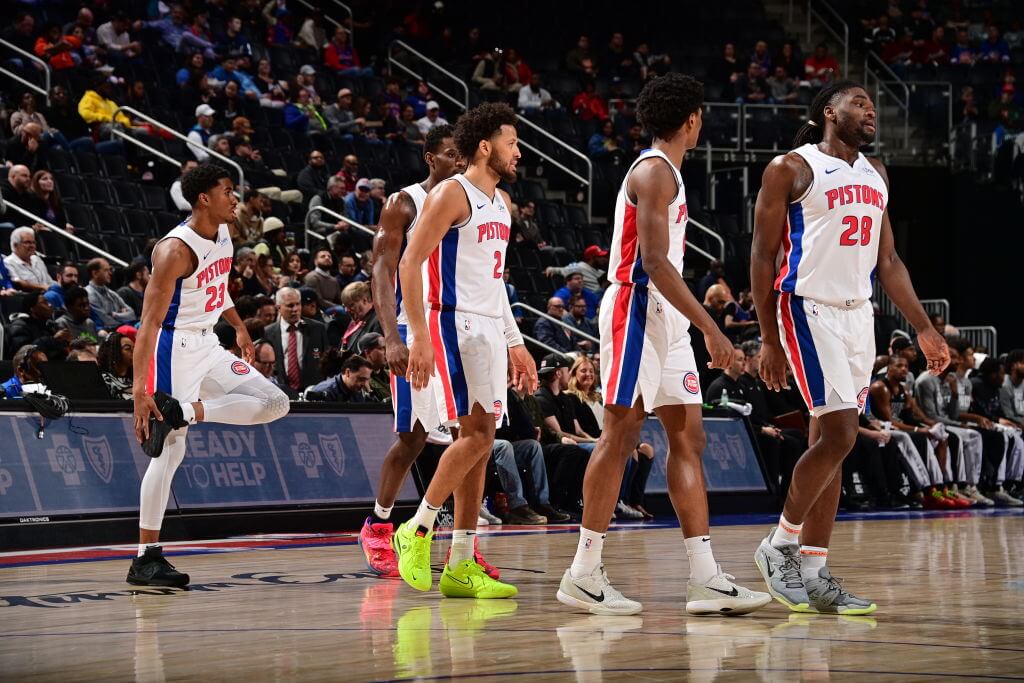For all that the Detroit Pistons’ young core — Cade Cunningham, Jaden Ivey, Ausar Thompson, Isaiah Stewart and Jalen Duren — provide in regards to intrigue and optimism individually, the group of five may have a major issue on its hands that could make the individual experiences null and void.
The lack of perimeter shooting is alarming and may force the organization to seriously rethink whether this group can succeed together as soon as this summer.
Before we get deep into the weeds, it should be noted that the Pistons’ front office may have to consider shaking up this core group sooner rather than later because Detroit, with a 12-56 record, has a chance to be the NBA’s worst team yet again. There’s a legitimate chance that this Pistons team finishes with the worst record in franchise history (16 wins would tie it). It’s even more likely that ownership feels like progress in the win-loss column should have been made.
If this were Year 1 or 2 of the Pistons’ rebuild, patience would still permeate from top to bottom. This is Year 4. Detroit has to be significantly better next season because of how the last three seasons have gone.
When healthy, the five names mentioned above make up the Pistons’ starting lineup. The best shooter, in terms of percentage, in that group is Stewart, who just started shooting volume 3s for the first time last season. Stewart is knocking down more than 38 percent of his nearly 4.0 attempts per game. The progress Stewart has made has been a bright spot in a season that has been rather dull. He’s making “open” and “wide open” 3-pointers at an acceptable rate, especially when you factor in his age and growing skill set. Opposing teams are staying home on Stewart more frequently when the ball is in his vicinity.
Yet, even with Stewart’s success from 3, the big man, who is probably the most consistent player in the starting lineup, doesn’t possess the upside of the other four in the rotation. Detroit, more than anything, needs the players occupying the other four spots to really be threats from distance. And soon.
Let’s go to Cunningham next because everything he’s shown since Jan. 1 suggests that he’s going to be fine from 3. Since the turn of the calendar year, the organization’s best player is knocking down 36.1 percent of his 5.3 3-point attempts per game, a fine mark considering the volume he’s putting up and the fact he missed an entire season, essentially, with a leg injury. Furthermore, it’s encouraging that, also since Jan. 1, Cunningham is knocking down a solid 38 percent on pull-up 3s (only 1.8 per game). If you look back since Feb. 15, a little over a month, Cunningham is at 44.8 percent (2.2 attempts per game). The signs are growing more and more encouraging as a pull-up 3-point shooter, an area that often catapults players into All-Star status. Now, Detroit does need Cunningham’s catch-and-shoot percentage to improve (he’s around 34.6 percent on those shots since Jan. 1) in order to fully utilize him and the Ivey backcourt when on the court together. But, at the end of the day, Cunningham’s growth and numbers as the team’s primary ballhandler suggest that they should continue to utilize him in that role more often than not.
That takes us to Ivey, who is the best player on the roster at getting to the rim with the ball in his hands. Ivey’s ability to attack defenses with his speed and improving touch is worthwhile for the Pistons, without question. However, if he’s going to play alongside Cunningham, he has to be better shooting the ball. Ivey is in the midst of a damaging 3-point shooting slump dating back to Feb. 1. Since then, he’s shooting 31.9 percent on close to 6.0 attempts per game. Over his last 10 games, the second-year guard is at 21.3 percent on 6.1 attempts per game. On the season, Ivey is in the low 30 percent on both pull-up 3s and catch-and-shoot 3s, per NBA.com.
Ivey has been the epitome of a streaky distance shooter since entering the NBA. Before this 10-game slump, he shot over 43 percent in February. Ivey has a trend of solid-to-great 3-point shooting one month and then truly detrimental 3-point shooting the next. Maybe Ivey will become the consistent 3-point threat the Pistons need, to make the pairing with Cunningham truly work. It’s just not there yet, and given the fragile state of the franchise at this point in time, Detroit’s decision-makers may need to figure out what they believe the future holds for Ivey as a shooter if the goal is to continue to make him a starter going forward.
Lastly, Thompson and Duren are complete non-threats from 3. Thompson is under 20 percent on the season, but it’s hard to be too critical of him because he defends at an elite level, finishes well at the rim and has the possibility to be a secondary ballhandler sooner rather than later. Thompson, along with Cunningham, especially Cunningham, is untouchable because if the shot does come around, you’re looking at someone with All-NBA upside due to what he can be on the defensive end. As for Duren, 3-point shooting isn’t in his arsenal. Not now, and maybe not for a long time. He has improved immensely as a free-throw shooter and that often is a good sign when projecting someone’s 3-point shooting, but that feels so far down the road that it’s hard to even consider at this point.
All in all, the Pistons have a group of young pieces that they really like and that all bring something different table. Usually, varying skill sets makes for a cohesive collection of talent. That hasn’t been the case in Detroit because, well, none of them are elite shooters. It would be tough to even say that 1 1/2 are good shooters at this point.
Sooner than they maybe anticipated, Detroit’s decision-makers may have to have tough conversations internally regarding this group of five players, if they fit and who is worth building around. The Pistons probably didn’t anticipate having these talks so seriously, so soon, but that’s what comes with losing at this level for four years.
It’s entirely possible that the players Detroit need to become consistent 3-point threats do so by next season. After all, this is a rebuild. Patience is required when fostering talented youth. It’s also entirely possible that it doesn’t happen. The caveat is that the Pistons don’t really have the luxury of rolling the dice this time around and banking on development of this magnitude, not across the board.
Losing, like this, changes things.


